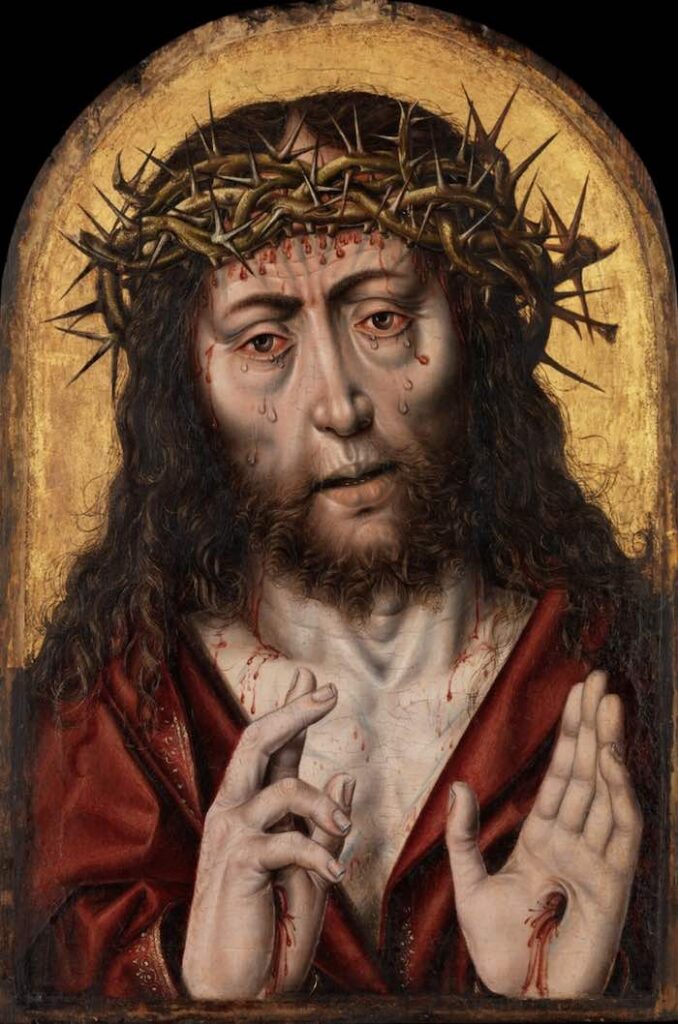



MAN OF SORROWS
"He was despised and rejected by mankind, a man of suffering, and familiar with pain. Like one from whom people hide their faces he was despised, and we held him in low esteem." ~ Isaiah 53.3
The prophet Isaiah prophesied 700+ years before the birth of Jesus. But, contrary to the understanding of many regarding the nature of the Messiahship, Isaiah, here in chapter 53, focuses on the Messiah as Suffering Servant.
While many held to a royal, Davidic view of the Messiah, this view, of a suffering Messiah was less compelling for many Jews. Afterall, who wants a suffering Messiah, when one can have a conquering, kingly Messiah.
The truth is Jesus is both, but many Jews did not understand this and didn’t apply this passage to the Messiah. Rather, like modern Jews, they interpret this passage to refer to the nation of Israel, who will suffer on the stage of international geo-politics for centuries. But the nation of Israel doesn’t suffer on behalf of the world, as clearly this person does. So, it cannot be the nation of Israel that Isaiah is describing.
But, it is clear from the text, that the One who will suffer is an individual, not a nation. Jesus is that person, who suffered on our behalf. It’s not pretty. It’s not enticing. It’s not popular. But, there it is. Jesus’ teachings and His death were not popular, nor were they something many would follow after.
But a few did. A few followed the Suffering Servant and preached the good news of his suffering, death, and resurrection. Praise God they did!
Prayer
Jesus, thank You for suffering for me. I cannot imagine how You suffered. I cannot imagine the pain You went through. Thank You for enduring this on my behalf. Amen.




Man of Sorrows (1525)
by Aelbrecht (Aelbert) Bouts
(oil on panel)
Metropolitan Museum of Art, New York
Aelbrecht Bouts, like his famed father, Dieric Bouts the Elder, was a Flemish painter in the 15th-16th century.
In this painting, the passion (suffering) of Christ is captured in grusome detail. Jesus is wearing a red robe and a crown of thorns. His face, neck, and hands bear the marks of his horrific suffering.
Jesus’ forehead has multiple bleeeding puncture wounds from the thorns. His eyes are bloodshot and bloodied drops of sweat drip across his face. This depicts the hematidrosis that Luke documents in Luke 22.44. This is a documented medical condition whereby blood vessels of the suffer, under excruciating stress and duress, burst, causing the sufferer to appear to be sweating blood.
Jesus’ eyes are bloodshot, probably from a combination of lack of sleep and multiple blows to face causing blood vessels in the ocular region to burst.
The blood on the neck likely comes from the beating by the Roman soldiers with the flagellum (“cat of nine tails”), a leather whip with multiple “tails” each embedded with barbed metal or jagged stone.
Jesus’ hands bear the marks of the spikes that held him to the cross. (Though often depicted in the palm of the hands, this is probably not historically correct. The weight of the body would have caused the spike to tear through the fleshy part of the palm. Thus, it is more likely that the crucifixion victim was nailed through the wrist, between the bones. )
The overall effect of this painting is to cause the viewer to wrestle with the intense suffering of the Messiah. The eyes look tired and clearly his body has been abused on our behalf. This is not a sanitized painting, but rather one that dares the viewer to engage with the Messiah and the dirty, gory manner in which He was murdered.


Man of Sorrows (1525)
by Aelbrecht (Aelbert) Bouts
(oil on panel)
Metropolitan Museum of Art, New York

Aelbrecht Bouts, like his famed father, Dieric Bouts the Elder, was a Flemish painter in the 15th-16th century.
In this painting, the passion (suffering) of Christ is captured in grusome detail. Jesus is wearing a red robe and a crown of thorns. His face, neck, and hands bear the marks of his horrific suffering.
Jesus’ forehead has multiple bleeeding puncture wounds from the thorns. His eyes are bloodshot and bloodied drops of sweat drip across his face. This depicts the hematidrosis that Luke documents in Luke 22.44. This is a documented medical condition whereby blood vessels of the suffer, under excruciating stress and duress, burst, causing the sufferer to appear to be sweating blood.
Jesus’ eyes are bloodshot, probably from a combination of lack of sleep and multiple blows to face causing blood vessels in the ocular region to burst.
The blood on the neck likely comes from the beating by the Roman soldiers with the flagellum (“cat of nine tails”), a leather whip with multiple “tails” each embedded with barbed metal or jagged stone.
Jesus’ hands bear the marks of the spikes that held him to the cross. (Though often depicted in the palm of the hands, this is probably not historically correct. The weight of the body would have caused the spike to tear through the fleshy part of the palm. Thus, it is more likely that the crucifixion victim was nailed through the wrist, between the bones. )
The overall effect of this painting is to cause the viewer to wrestle with the intense suffering of the Messiah. The eyes look tired and clearly his body has been abused on our behalf. This is not a sanitized painting, but rather one that dares the viewer to engage with the Messiah and the dirty, gory manner in which He was murdered.
Playlist Daily Highlight
Take the time to listen . . . really listen to the words of this song. Reflect on them. Let God’s spirit speak to you in this moment.





